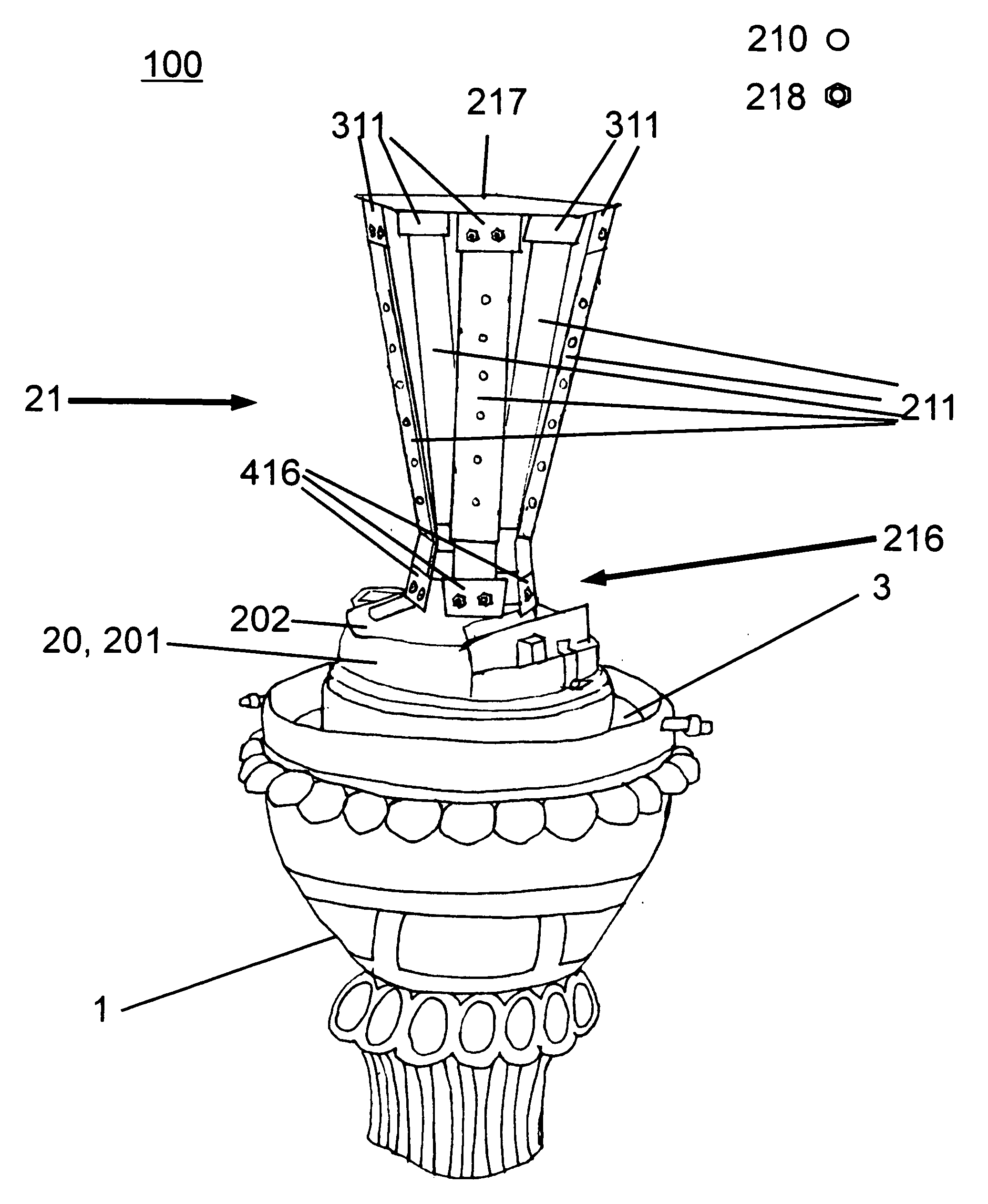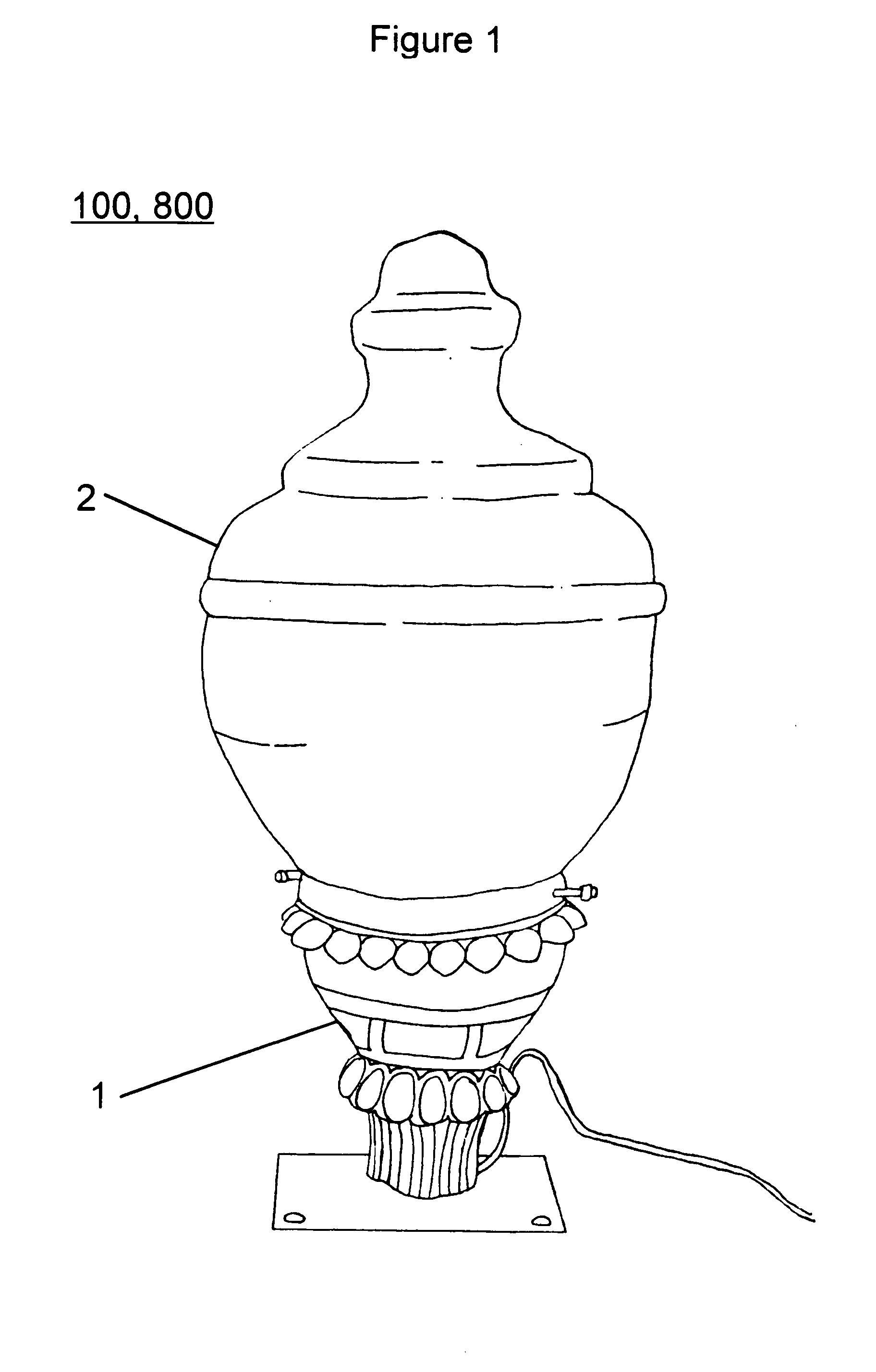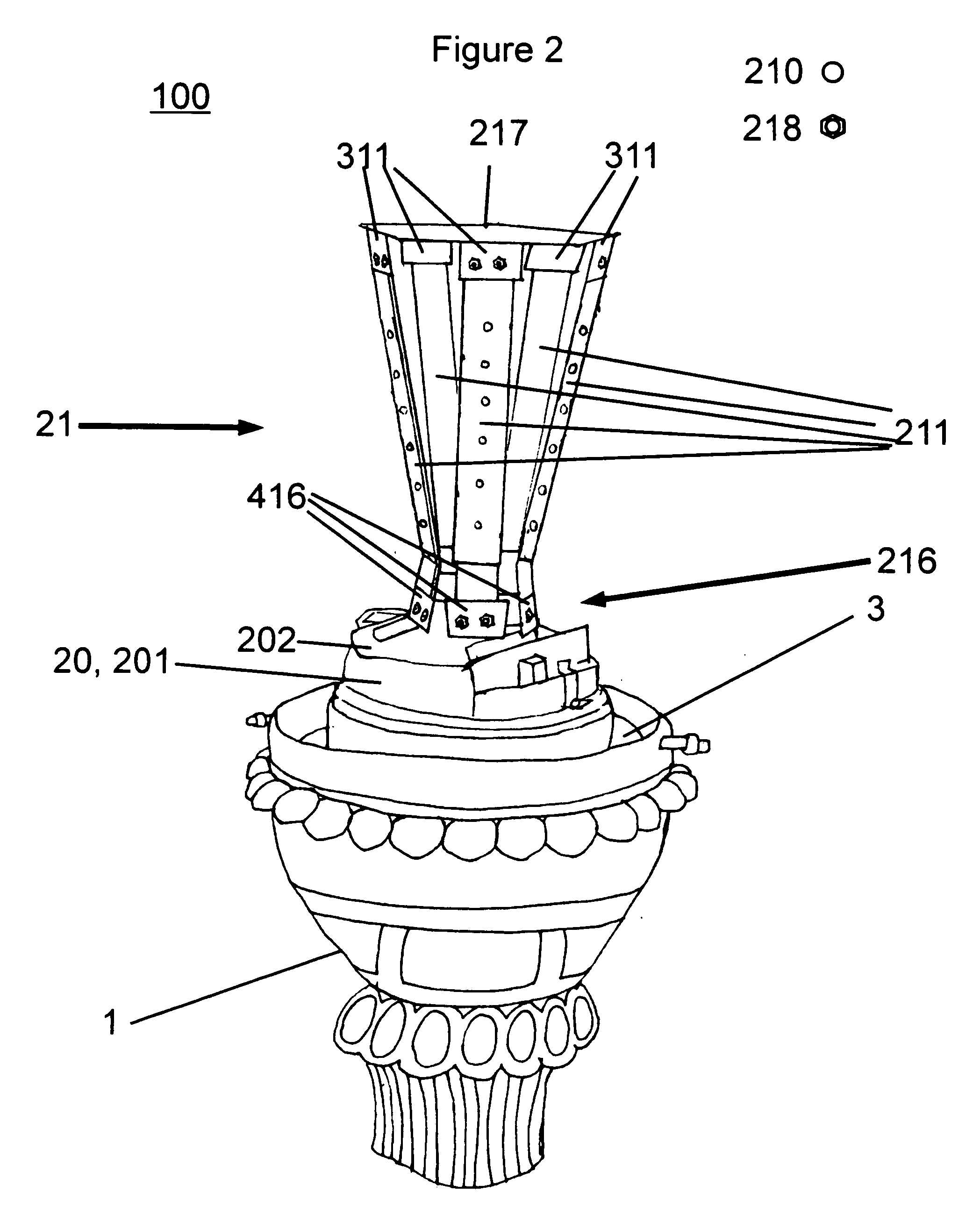LED luminaire
a technology of led luminaires and diodes, which is applied in the direction of fixed installation, lighting and heating apparatus, lighting support devices, etc., can solve the problems of unsafe high currents, high energy consumption, and high energy consumption of luminaires, and achieve low energy consumption, low maintenance, and low heat generation
- Summary
- Abstract
- Description
- Claims
- Application Information
AI Technical Summary
Benefits of technology
Problems solved by technology
Method used
Image
Examples
Embodiment Construction
[0051]Referring now to the drawings, and more particularly to FIGS. 1-12, there are shown exemplary embodiments of the structures and method according to the present invention. For simplicity of description, all embodiments of the present invention are exemplarily applied to illumination of outdoor and public environments. One of ordinary skill in the art would clearly realize that the present invention is not limited to these applications. On the contrary, the present invention is advantageously applicable to all applications requiring illumination. Examples of applicable environments include household lamp and fixture lighting, artistic and performance lighting, emergency lighting, traffic signal lighting, and so on.
[0052]FIG. 1 illustrates an exemplary outer portion of luminaires 100, 800 of the first and second exemplary embodiments of the present invention. The luminaires 100, 800 includes a base 1 and a cover 2. The cover 2 provided for the luminaires 100, 800 is universal in ...
PUM
 Login to View More
Login to View More Abstract
Description
Claims
Application Information
 Login to View More
Login to View More - R&D
- Intellectual Property
- Life Sciences
- Materials
- Tech Scout
- Unparalleled Data Quality
- Higher Quality Content
- 60% Fewer Hallucinations
Browse by: Latest US Patents, China's latest patents, Technical Efficacy Thesaurus, Application Domain, Technology Topic, Popular Technical Reports.
© 2025 PatSnap. All rights reserved.Legal|Privacy policy|Modern Slavery Act Transparency Statement|Sitemap|About US| Contact US: help@patsnap.com



